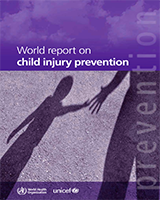BOX 5.2Protective equipment to prevent wrist fractures
Falls are a common form of sport and recreational injury in children and adolescents. Activities that are associated with “outreach” falls – where the person falls forward and lands on an outstretched arm – have a significant likelihood of resulting in upper limb injuries. Such activities include snow and ice sports (such as skiing and ice skating) and sports involving wheels (such as roller skating and skateboarding).
Fractures of the ulna and radius, particularly of the distal radius, as well as severe upper limb injuries, are common outcomes of outreach fall injuries. The usual sequence of events leading to these wrist injuries is a loss of balance followed by a forward fall, with the person landing on an outstretched arm. The risk of injury is further increased by factors such as:
- –
high speed;
- –
hard or irregular surfaces;
- –
other physical hazards;
- –
risky manoeuvres, such as aerial jumps in skateboarding.
There is considerable evidence that the majority of distal radial fractures associated with sporting activities, particularly those in snow and those involving wheels, could be prevented by the use of wrist guards (140). In fact, children and young people who do not wear wrist guards are up to ten times more likely to sustain severe wrist injuries than those who wear them. This is the case, irrespective of the person’s level of skill in the sport (141). Despite this, few participants wear them, with wearing rates estimated at less than 60% for in-line skaters and less than 30% for snowboarders.
Wrist guards are ergonomically designed devices that protect the palm of the hand and support the wrist without compromising range of motion. They reduce wrist fractures by absorbing impact energy and by sharing the load, so that the bones in the wrist and forearm take less of the strain of the fall (142). Fears that wrist guards may exacerbate injury risk, or lead to more fractures further up the arm, are largely unfounded. Currently, there is no international standard for wrist guards and there are suggestions that not all models provide full protection. Nonetheless, the overwhelming weight of evidence is in favour of their effectiveness.
The problem, as with other forms of protective equipment, is how to encourage young people to wear wrist guards. A range of approaches is needed, combining educational measures with laws and their enforcement at the sites where children and young people are likely to participate in these activities. These measures should be accompanied by the use of prominent role models seen wearing wrist guards, and advice as to their effectiveness at places where they are sold or rented out.
